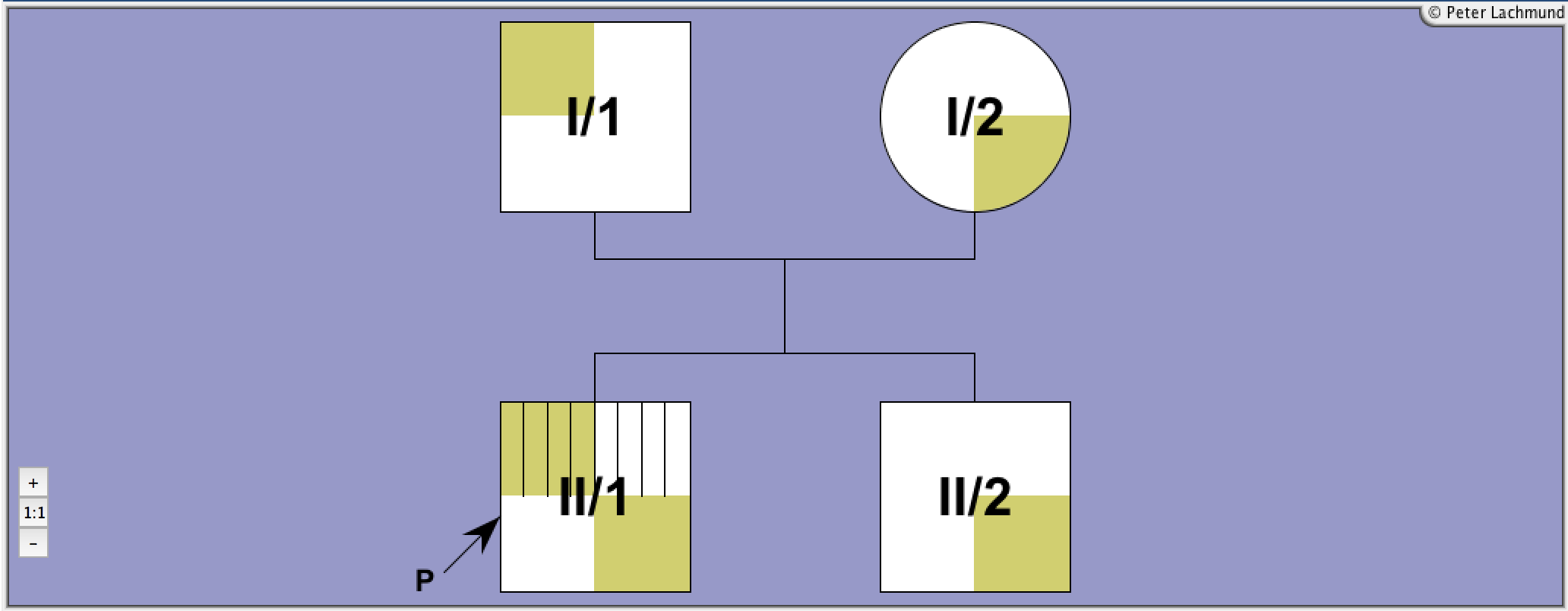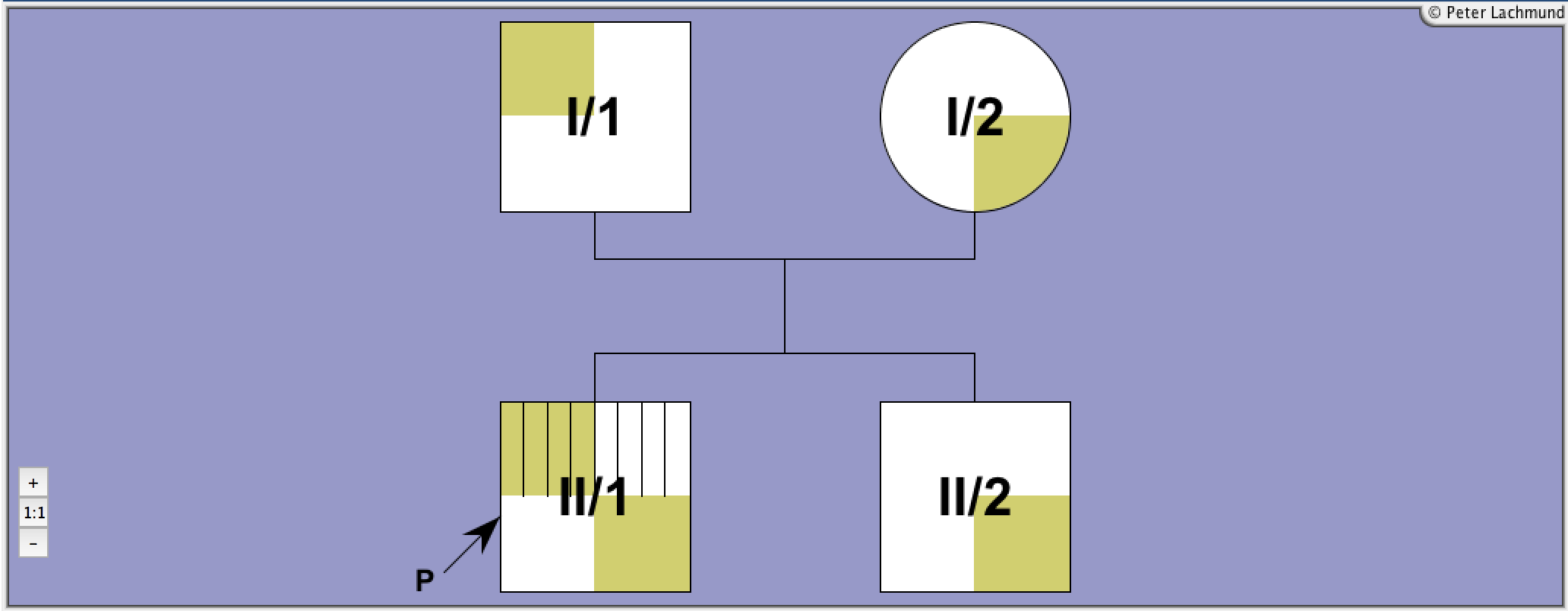Details Of Published TSH Receptor Mutation
Cys 600 Arg
c.1798T>CInactivating TSH Receptor Mutation
Type
loss
Manifestation
family
Exon
10
Legend:

Male

Female

Unknown

Deceased
+
Mutation
-
Wild-Type

Heterozygous

Heterozygous

Compound Heterozygous

Homozygous

Hypothyroid

Hypoplastic Gland + Hypothyroid
P
Index Patient
Molecular Characteristics:
I/1: Cys600Arg
I/2: P162Ala
II/1: Cys600Arg/P162Ala compound heterozygous
II/2: Pro162Ala
I/2: P162Ala
II/1: Cys600Arg/P162Ala compound heterozygous
II/2: Pro162Ala
Clinical Features:
diagnosis:
II/1: 25yr, euthyroid hyperthyrotropinaemia, hypoplastic thyroid gland, 1 brother and parents with borderline TSH levels
II/1: 25yr, euthyroid hyperthyrotropinaemia, hypoplastic thyroid gland, 1 brother and parents with borderline TSH levels
Treatment:
not known
Functional Characteristics:
cAMP
(basal)
(basal)
cAMP
(TSH)
(TSH)
IP
(basal)
(basal)
IP
(TSH)
(TSH)
TSH-Binding
Cell Surface Expression
Prevalence
LRA
Ref
-
0
nd
nd
nd
-
1
Legend:
cAMP (basal): basal in vitro cAMP production of mutant over wild-type TSHR
cAMP (TSH): maximal in vitro cAMP production of mutant over wild-type TSHR
IP (basal): basal in vitro IP production of mutant over wild-type TSHR
IP (TSH): maximal in vitro IP production of mutant over wild-type TSHR
TSH-binding: maximal TSH-binding compared to the wild-type TSHR
Cell surface expression: cell surface expression of mutant compared to WT-TSHR
LRA: linear regression analysis (LRA) of constitutive activity as a function of TSHR expression determined by 125I-bTSH binding or FACS analysis compared to the wild-type TSHR
Prevalence: Prevalence of (somatic and germline) activating mutations*
Ref: Reference for functional characterization
Child: Found in children.
Reference 1:
Alberti et al.
J. Clin. Endocrinol. Metab. 87: 2549-2555
Germline Mutations of TSH Receptor Gene as Cause of Nonautoimmune Subclinical Hypothyroidism
2002


